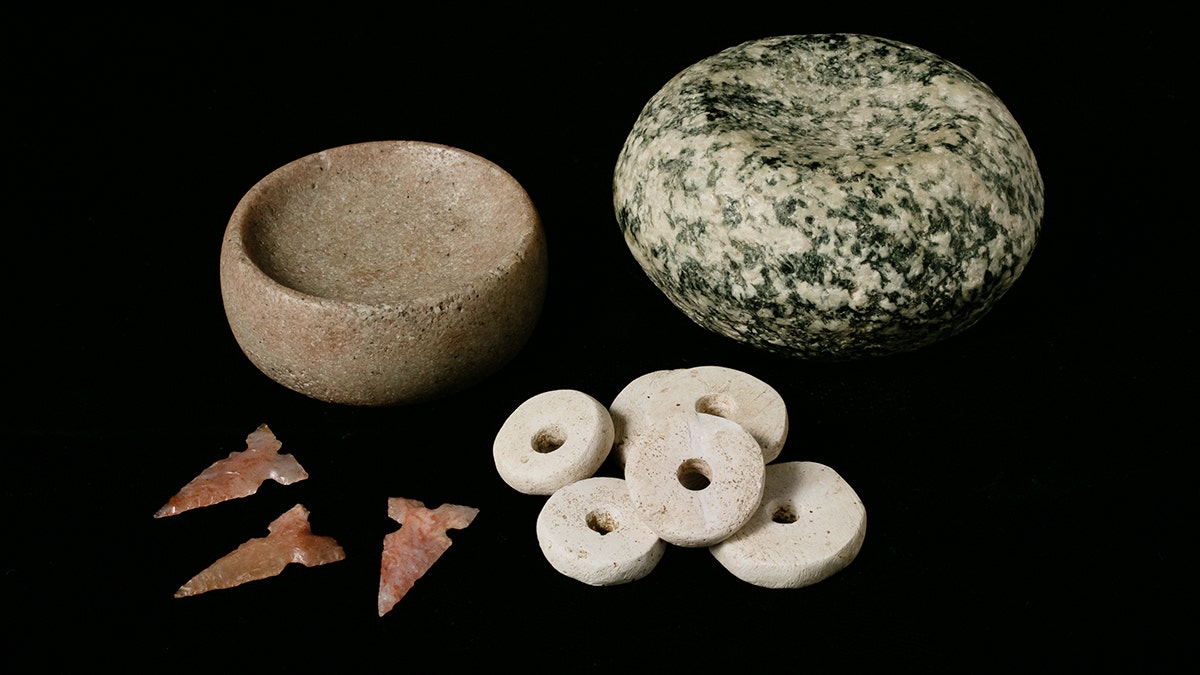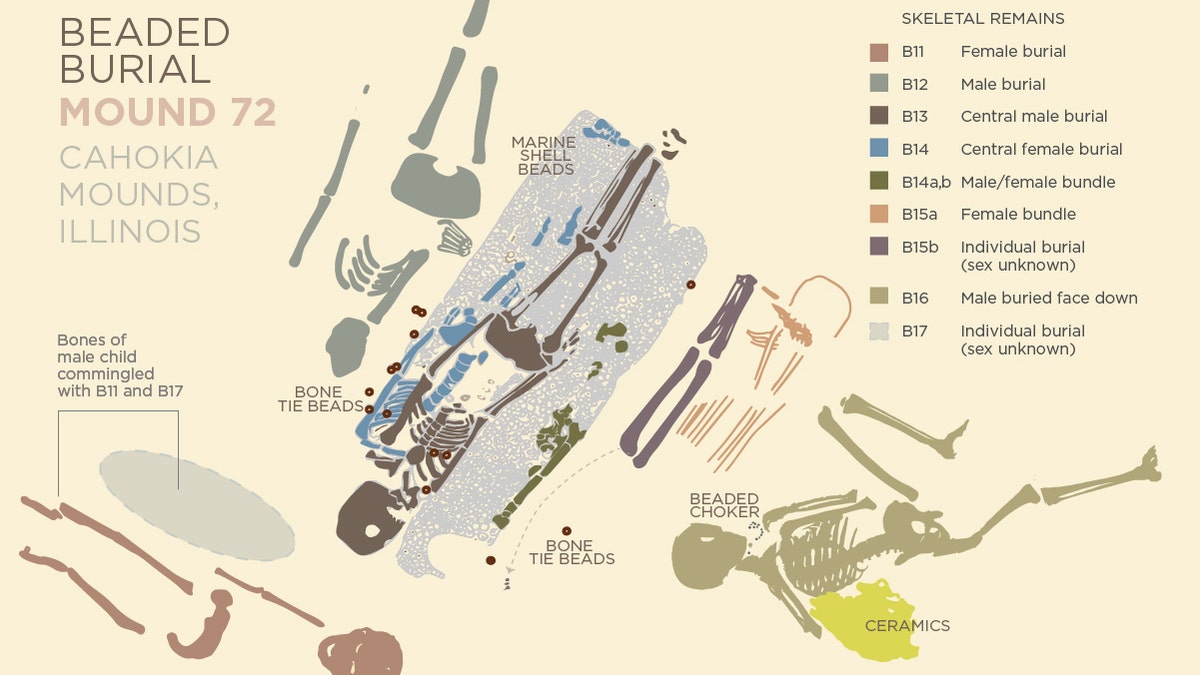
New artifacts from Cahokia (Photo by L. Brian Stauffer/University of Illinois Board of Trustees)
A theory nearly five-decades old surrounding ‘America’s 1st City’ has been debunked according to a new study, published in the journal American Antiquity.
Researchers working at the Cahokia Mounds in Champaign, Ill. dug deeper at the burial site Mound 72 and made a surprising discovery. The mound was previously thought to be a monument to male power that contained six bodies buried with artifacts that included two men wrapped in a blanket made of beads, representing male dominance in the city. But researchers say the latest findings tell a very different story.
For starters, the burial, also nicknamed the “beaded burial,” was found to contain 12 bodies instead of six. Moreover, researchers determined that the two central bodies were not males surrounded by servants. Instead, they are now believed to be the remains of a man and woman. Researchers have also determined that a child was buried at the site.
Study co-author and Illinois State Archaeological Survey (ISAS) Director Thomas Emerson said in a press release that the new discovery changes the whole picture of what rank and file was in Cahokia. “We don't have a system in which males are these dominant figures and females are playing bit parts,” he said. “And so, what we have at Cahokia is very much a nobility. It's not a male nobility. It's males and females, and their relationships are very important."

(Graphic by Julie McMahon)
Cahokia is believed to have been settled by Late Woodland Indians around 700 AD. It is estimated that the settlement was larger than London in 1250, yet by the late 1300s, it was abandoned.
The mounds are made of earth that was dug from pits using tools fashioned out of wood and stone and transported on people’s backs using baskets.
Mound 72 was discovered by archaeologist Melvin Fowler in 1967. It is believed that residents were buried in Mound 72 between AD 1000 and 1200. Because the central bodies were discovered with beads shaped to resemble a bird, Fowler hypothesized that they represented mythical warrior chiefs.
The shift from a gender hierarchy to status hierarchy also aligns with what Emerson and his team have assumed all along.
"Most of the stone figurines found there are female. The symbols showing up on the pots have to do with water and the underworld. And so now, Mound 72 fits into a more consistent story with what we know about the rest of the symbolism and religion at Cahokia," he said.




















